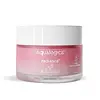What's inside
What's inside
 Key Ingredients
Key Ingredients

 Benefits
Benefits

 Concerns
Concerns

 Ingredients Side-by-side
Ingredients Side-by-side

Water
Skin ConditioningDimethicone
EmollientCyclopentasiloxane
EmollientDimethicone/Vinyl Dimethicone Crosspolymer
Skin ConditioningHydroxyethyl Urea
HumectantNiacinamide
SmoothingCaprylyl Methicone
Skin ConditioningPEG-12 Dimethicone
Skin ConditioningPEG-Crosspolymer
Aloe Barbadensis Leaf Juice
Skin ConditioningAmmonium Acryloyldimethyltaurate Crosspolymer
Emulsion StabilisingVp/Va Copolymer
Polyacrylamide
C13-14 Isoparaffin
EmollientLaureth-7
EmulsifyingGlycerin
HumectantGlyceryl Glucoside
HumectantCitrullus Lanatus Fruit Extract
Skin ConditioningSodium Benzoate
MaskingPhenoxyethanol
PreservativeDimer Dilinoleate/Ethylenediamine Copolymer Acetate
Sodium Hyaluronate
HumectantCI 16255
Cosmetic ColorantParfum
MaskingWater, Dimethicone, Cyclopentasiloxane, Dimethicone/Vinyl Dimethicone Crosspolymer, Hydroxyethyl Urea, Niacinamide, Caprylyl Methicone, PEG-12 Dimethicone, PEG-Crosspolymer, Aloe Barbadensis Leaf Juice, Ammonium Acryloyldimethyltaurate Crosspolymer, Vp/Va Copolymer, Polyacrylamide, C13-14 Isoparaffin, Laureth-7, Glycerin, Glyceryl Glucoside, Citrullus Lanatus Fruit Extract, Sodium Benzoate, Phenoxyethanol, Dimer Dilinoleate/Ethylenediamine Copolymer Acetate, Sodium Hyaluronate, CI 16255, Parfum
Water
Skin ConditioningCyclopentasiloxane
EmollientDimethicone Crosspolymer
Emulsion StabilisingGlycerin
HumectantPolyacrylamide
C13-14 Isoparaffin
EmollientLaureth-7
EmulsifyingSilanetriol
Hyaluronic Acid
HumectantDivinyldimethicone/Dimethicone Copolymer
C12-13 Pareth-23
CleansingC12-13 Pareth-3
EmulsifyingDimethylsilanol Hyaluronate
HumectantSaccharide Isomerate
HumectantOryza Sativa Bran Water
MaskingSaccharomyces/Xylinum/Black Tea Ferment
Skin ConditioningAvena Sativa Meal Extract
SoothingPyrus Malus Fruit Extract
Skin ConditioningLactobacillus
Skin ConditioningMaltodextrin
AbsorbentSodium Hydroxide
BufferingMethylsilanol Mannuronate
Skin ConditioningPhenoxyethanol
PreservativeMethylisothiazolinone
PreservativeAcrylates/C10-30 Alkyl Acrylate Crosspolymer
Emulsion StabilisingDisodium EDTA
CI 42090
Cosmetic ColorantWater, Cyclopentasiloxane, Dimethicone Crosspolymer, Glycerin, Polyacrylamide, C13-14 Isoparaffin, Laureth-7, Silanetriol, Hyaluronic Acid, Divinyldimethicone/Dimethicone Copolymer, C12-13 Pareth-23, C12-13 Pareth-3, Dimethylsilanol Hyaluronate, Saccharide Isomerate, Oryza Sativa Bran Water, Saccharomyces/Xylinum/Black Tea Ferment, Avena Sativa Meal Extract, Pyrus Malus Fruit Extract, Lactobacillus, Maltodextrin, Sodium Hydroxide, Methylsilanol Mannuronate, Phenoxyethanol, Methylisothiazolinone, Acrylates/C10-30 Alkyl Acrylate Crosspolymer, Disodium EDTA, CI 42090
Ingredients Explained
These ingredients are found in both products.
Ingredients higher up in an ingredient list are typically present in a larger amount.
This ingredient is also known as "C13-14 Isoalkane".
C13-14 Isoparaffin is created from petroleum-based mineral oils. It is an emollient and helps thicken a product.
As an emollient, it helps keep the skin soft and smooth by creating a barrier on top. This barrier traps moisture in, keeping the skin hydrated.
C13-14 Isoparaffin may not be fungal-acne safe.
Learn more about C13-14 IsoparaffinCyclopentasiloxane, or D5, is a silicone used to improve texture of products and trap moisture.
D5 is considered lightweight and volatile. Volatile means it evaporates quickly after application. Once evaporated, D5 leaves a thin barrier that helps keep skin hydrated.
It is also an emollient. Emollients help soften the skin and prevent water loss. Silicones create a silky texture in products. D5 helps other ingredients become more spreadable.
Studies show D5 is safe to use in skincare products. We recommend speaking with a skincare professional if you have concerns.
Learn more about CyclopentasiloxaneGlycerin is already naturally found in your skin. It helps moisturize and protect your skin.
A study from 2016 found glycerin to be more effective as a humectant than AHAs and hyaluronic acid.
As a humectant, it helps the skin stay hydrated by pulling moisture to your skin. The low molecular weight of glycerin allows it to pull moisture into the deeper layers of your skin.
Hydrated skin improves your skin barrier; Your skin barrier helps protect against irritants and bacteria.
Glycerin has also been found to have antimicrobial and antiviral properties. Due to these properties, glycerin is often used in wound and burn treatments.
In cosmetics, glycerin is usually derived from plants such as soybean or palm. However, it can also be sourced from animals, such as tallow or animal fat.
This ingredient is organic, colorless, odorless, and non-toxic.
Glycerin is the name for this ingredient in American English. British English uses Glycerol/Glycerine.
Learn more about GlycerinLaureth-7 is created by the ethoxylation of lauryl alcohol using ethylene oxide. Lauryl alcohol is a fatty alcohol with hydrating properties.
This ingredient is an emulsifier and cleansing ingredient. As an emulsifier, it is used to prevent ingredients from separating. It also helps cleanse the skin by gathering dirt, oil, and pollutants to be rinsed away.
Phenoxyethanol is a preservative that has germicide, antimicrobial, and aromatic properties. Studies show that phenoxyethanol can prevent microbial growth. By itself, it has a scent that is similar to that of a rose.
It's often used in formulations along with Caprylyl Glycol to preserve the shelf life of products.
Polyacrylamide is a synthetic polymer. It is used to stabilize products and bind ingredients. When hydrated, Polyacrylamide forms a soft gel.
Polyacrylamide is low-toxicity. If source properly, it is deemed safe to use in cosmetics.
It should be noted the precursor to Polyacrylamide is acrylamide. Acrylamide is a carcinogen. Most reputable sources of Polyacrylamide will screen for residual acrylamide to make sure the count is in a safe range. Acrylamide is not able to be absorbed through the skin.
We recommend speaking with a professional if you have concerns.
Learn more about PolyacrylamideWater. It's the most common cosmetic ingredient of all. You'll usually see it at the top of ingredient lists, meaning that it makes up the largest part of the product.
So why is it so popular? Water most often acts as a solvent - this means that it helps dissolve other ingredients into the formulation.
You'll also recognize water as that liquid we all need to stay alive. If you see this, drink a glass of water. Stay hydrated!
Learn more about Water